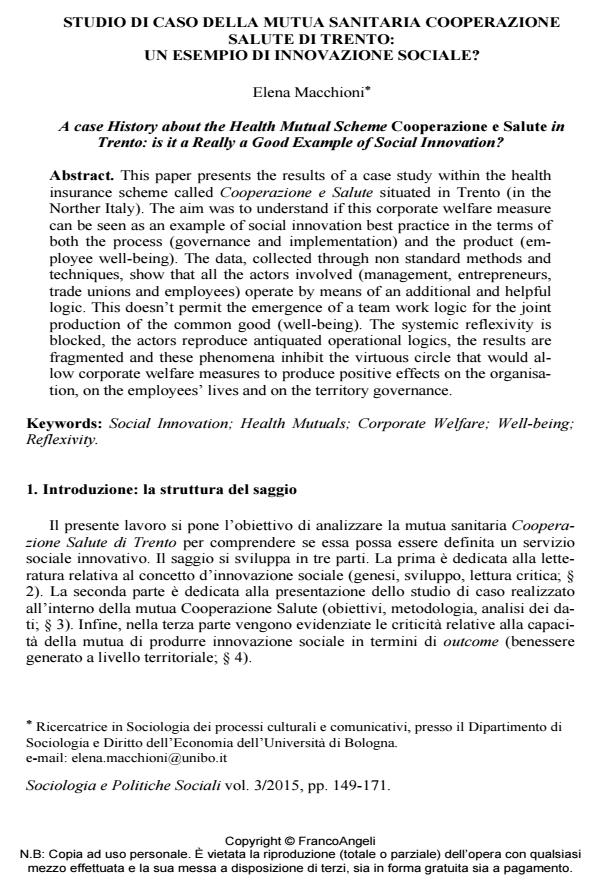A case History about the Health Mutual Scheme Cooperazione e Salute in Trento: is it a Really a Good Example of Social Innovation?
Journal title SOCIOLOGIA E POLITICHE SOCIALI
Author/s Elena Macchioni
Publishing Year 2016 Issue 2015/3
Language Italian Pages 23 P. 149-171 File size 146 KB
DOI 10.3280/SP2015-003009
DOI is like a bar code for intellectual property: to have more infomation
click here
Below, you can see the article first page
If you want to buy this article in PDF format, you can do it, following the instructions to buy download credits

FrancoAngeli is member of Publishers International Linking Association, Inc (PILA), a not-for-profit association which run the CrossRef service enabling links to and from online scholarly content.
This paper presents the results of a case study within the health insurance scheme called Cooperazione e Salute situated in Trento (in the Norther Italy). The aim was to understand if this corporate welfare measure can be seen as an example of social innovation best practice in the terms of both the process (governance and implementation) and the product (employee well-being). The data, collected through non standard methods and techniques, show that all the actors involved (management, entrepreneurs, trade unions and employees) operate by means of an additional and helpful logic. This doesn’t permit the emergence of a team work logic for the joint production of the common good (well-being). The systemic reflexivity is blocked, the actors reproduce antiquated operational logics, the results are fragmented and these phenomena inhibit the virtuous circle that would allow corporate welfare measures to produce positive effects on the organisation, on the employees’ lives and on the territory governance.
Keywords: Social Innovation; Health Mutuals; Corporate Welfare; Well-being; Reflexivity
Elena Macchioni, Studio di caso della mutua sanitaria cooperazione salute di Trento: un esempio di innovazione sociale? in "SOCIOLOGIA E POLITICHE SOCIALI" 3/2015, pp 149-171, DOI: 10.3280/SP2015-003009